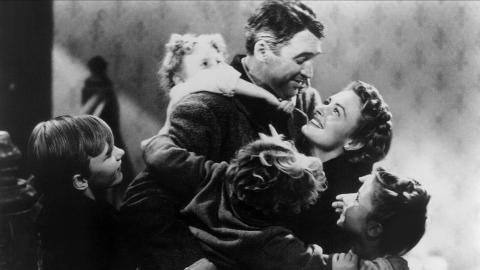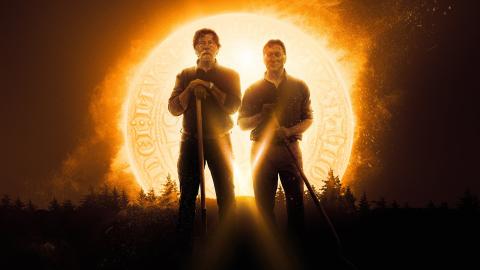Anyone can stop a man’s life, but no one his death: a thousand doors open onto it.
Seneca the Younger, 65A.D.
Infant Mortality and Childbirth
At birth, chances of reaching old age were slim. Many did not survive infancy, and most would have experienced the death of at least one sibling. When figures for infant mortality emerged around 1600, it was estimated that a third of children died before the age of nine, a proportion which only started to really improve in the latter half of the 19th Century. Indeed until the early 17th Century, midwives were allowed to carry out emergency baptisms, a precaution to protect the souls of the scores of children that would not survive their first hours of life. Many more died around the time of weaning, variously due to malnutrition, accident or disease.
In addition to this, before modern medical knowledge, women suffered the added dangers of childbirth resulting from a plethora of complications such as blood loss and the deadly bacterial infection puerperal fever. Until the 1700s childbirth was a women’s affair, but thereafter more professional men-midwives started operating. However this did little to reduce the death rate. Before knowledge about sterilisation, the use of medical instruments such as forceps was often counterbalanced by deaths through infection.
Fatal Diseases
If you survived childhood, a common cause of death, often in early adolescence was disease. One of the earliest of these killer diseases was Smallpox, which is thought to have emerged around the same time as our ancestor’s early domestication of animals. A disease characterised by raised pustules, especially on the face and lower arms, it was sometimes survivable: Queen Elizabeth I emerged from it to rule for another forty years. However before treatments and inoculations, around 25% of those who contracted the disease died, and those who survived were often left pockmarked or blind. Another serious threat to our ancestors was Tuberculosis, an illness which is known to have existed as long ago as 450B.C. Known variously as Phthisis, Consumption or TB it was usually fatal, with victims suffering severe coughing fits as their lungs slowly deteriorated. Until the widespread vaccinations of the mid 20th Century TB was the biggest killer in Western Europe.
Death and the City
The urbanisation which accompanied the industrial revolution of the 19th Century accelerated the spread of these contagious diseases. Epidemics thriving in the squalor, malnutrition, and overpopulation of slums and prisons radiated out across towns and cites meaning that life expectancy in the Victorian metropolises became especially dire. Disease was a large factor in Manchester’s 60% death rate for working class children under 5, while in London the average life expectancy for a labourer was just 22. Even in the 20th Century, pandemics could spiral out of control. The 1918 flu pandemic for example is thought to have killed up to 50 million people, or 3% of the world’s population at the time.
Cholera
Another product of overpopulation was the spread of disease through contaminated water. London’s sewers were not installed until 1859, so contaminated human and animal faeces often found their way onto the streets and into water supplies. Along with diseases such as Dysentery and Typhoid Fever, a catastrophic consequence of this was Cholera. From when it arrived in Britain in 1831 until John Snow’s discovery of how it spread in 1854, cholera proved catastrophic, carrying away 7000 people in its first year. John Snow‘s breakthrough in connecting a cholera epidemic in Soho with the local water pump proved revolutionary and paved the way for the introduction of widespread sewerage and a resulting plunge in the mortality connected with waterborne diseases.
Industrial Deaths
Many also worked in extremely dangerous environments. During the Industrial Revolution of the 19th Century, thousands took on jobs such as mining, an occupation usually reserved for men, and work in factories, an occupation for both sexes. Children, often working very long hours from a young age worked in both. Thousands were killed or mutilated amid the whirring machines of heavy industry, often falling into them through sheer exhaustion. The coal used to power the machines was mined in dreadful conditions, with many workers killed by gas, explosions, or due to tunnels caving in. The dangers continued into the 20th century. In 1913 at Senghenydd Colliery in Wales, 439 miners were killed in the worst mining disaster in British history.
War Deaths
One of the most devastating killers over the years has been war, carrying off countless victims. Apart from mortality from combat, war is often accompanied by famine and disease that thrives amongst soldiers and communities already in a weakened state. Though warfare has been recorded since at least 2700 B.C. (first recorded war was between Sumer in modern Iran and Elam in modern Iraq) the great wars of the 20th Century have resulted in loss of life on an unprecedented scale, the death toll suffered during World War II was the highest the world had ever seen, with an estimated 60 to 70 million people losing their lives worldwide. The exterminations in genocides such as the Nazi Holocaust from 1941-45 (approximately 11 million deaths including 6 million Jews) and Stalin’s Holodomor, the man-made famine in Ukraine which killed somewhere between 1.8 and 7.5 million people from 1932-33 have also added hideous death tolls across the centuries.
Did you know?
Though Queen Elizabeth I managed to survive smallpox, other rulers were not so lucky. Victims to the disease included two Japanese emperors, the kings of Burma and Siam, and perhaps even the Roman emperor Marcus Aurelius. The last Aztec emperor along with millions of his subjects also succumbed to the disease after it was brought to the Americas by Europeans in the 16th Century., In modern Britain most people carry out their lives with little exposure to the dead. Only 18% of people currently die at home, with many spending their last days removed from family life in hospitals or care homes. However this is an extremely modern phenomenon. Until the relatively recent improvements in sanitation and medicine many people died young, and most at home.
















